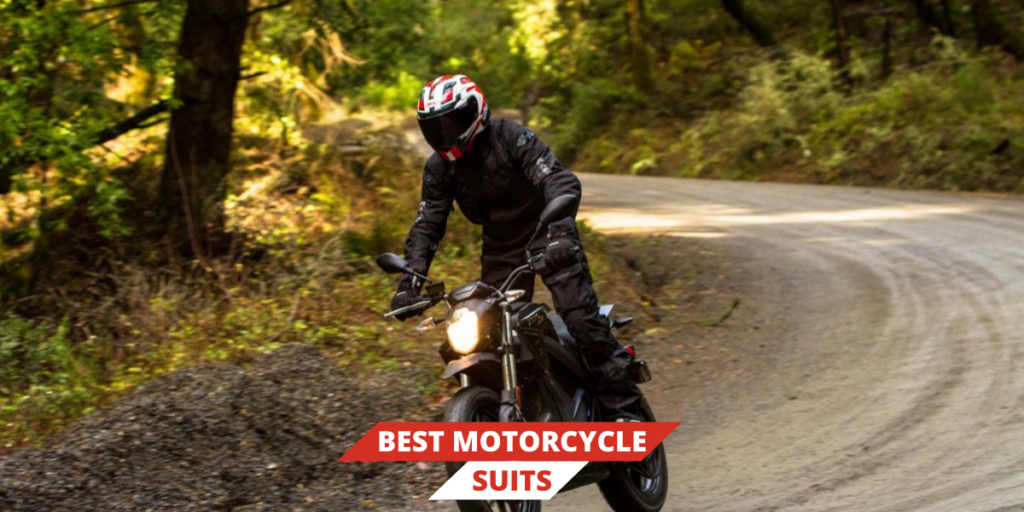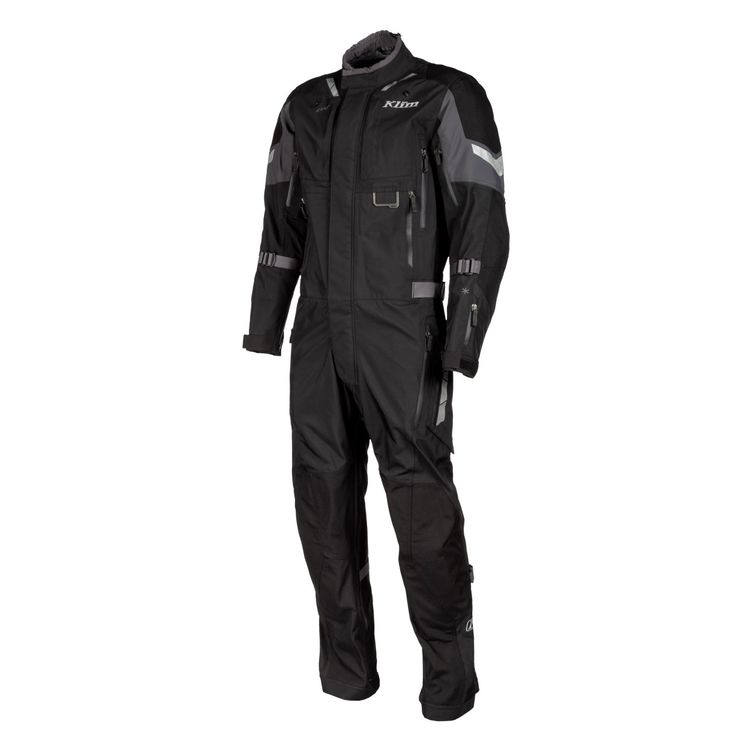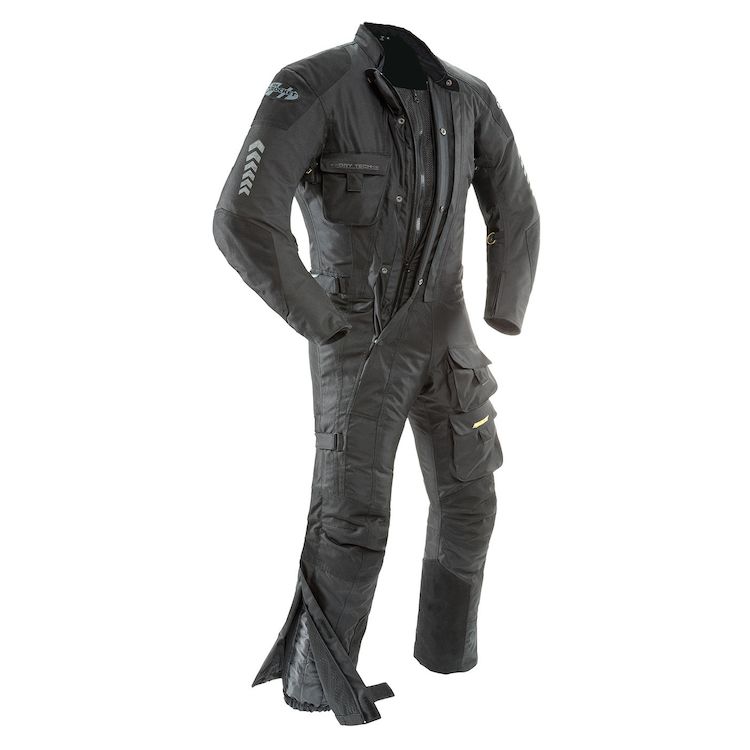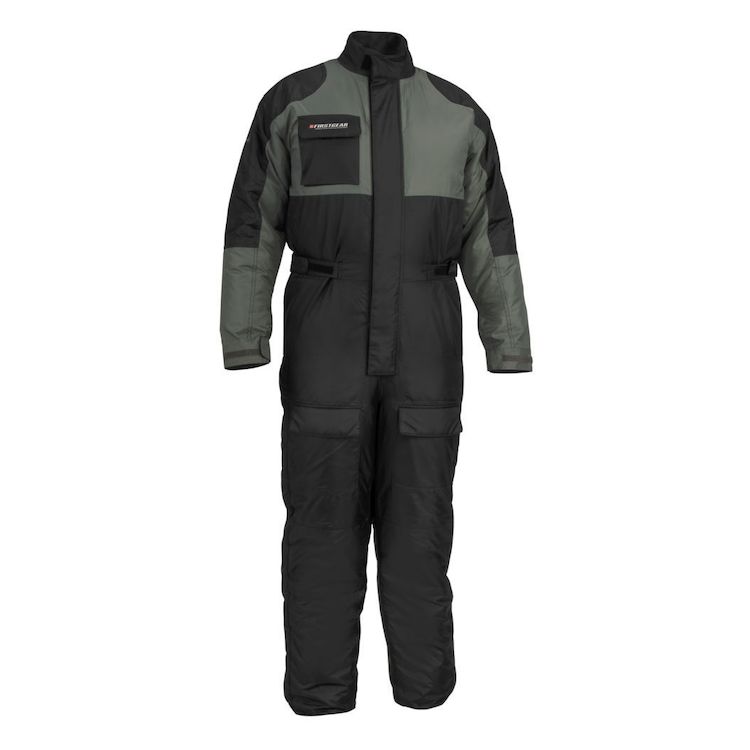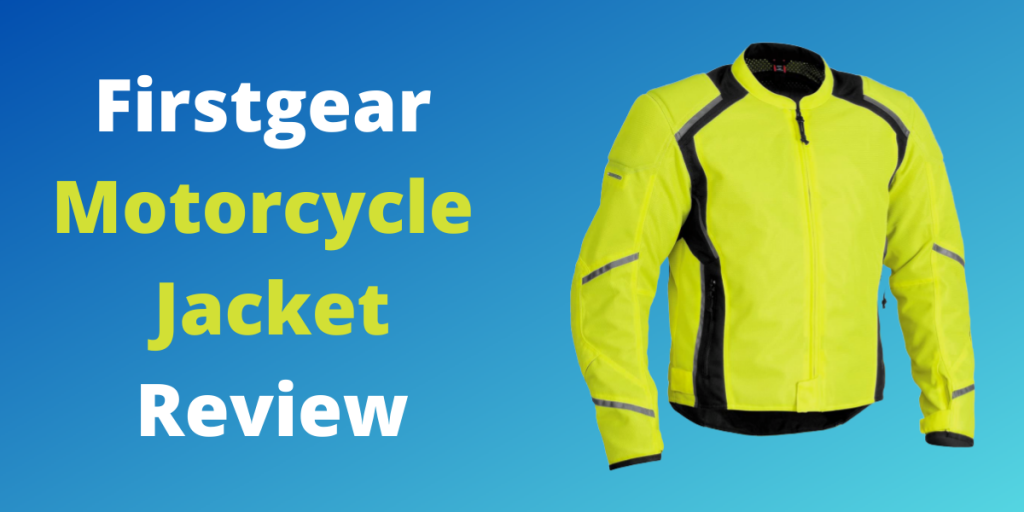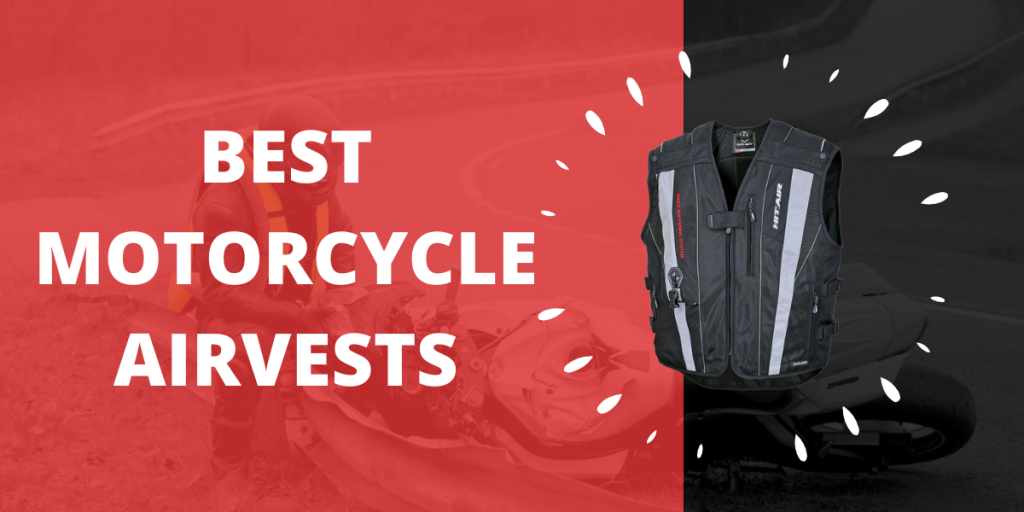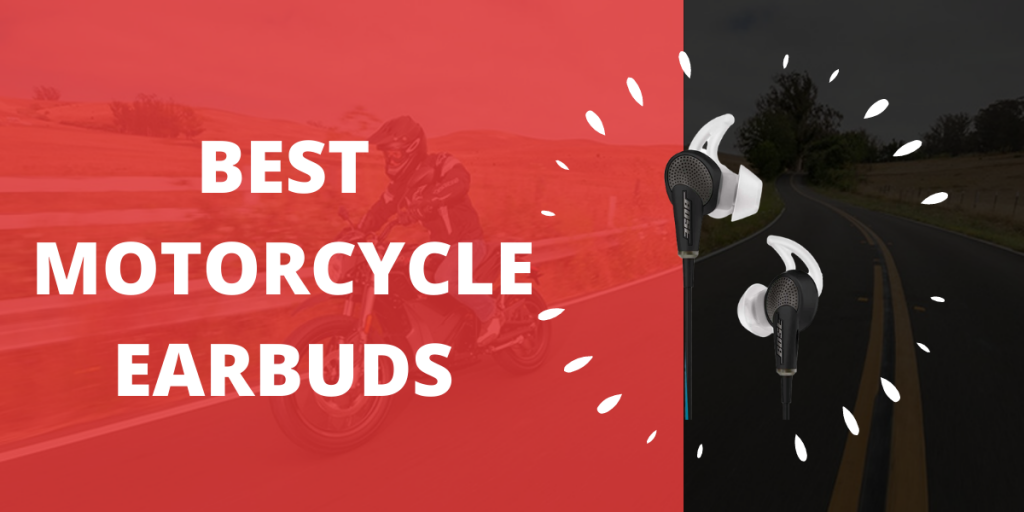Any responsible rider understands the value of riding gear for motorcycles. Anybody could suffer crashes regardless of their bike experience. Also, at low speeds, let’s admit it, a collision can be a big concern.
It’s not easy to pick the correct items, nonetheless. Helmet, gloves, boots, so much to think about. We don’t just want to feel protected; we also want to look good on the route. Why not try a suit instead of ordering individual coats and pants? They are the perfect way to defend the entire body. This article looked for the best fit in the industry today to find the right riding apparel for you.
Types of Motorcycle Riding Suits
There are two types of riding suits you can opt for, depending on your needs and requirements.
ONE-PIECE
If you’ve ever seen a Grand Prix or motocross race, one-piece motorcycle suits can appear very similar. They are common with professional riders for making up a single aerodynamic device but are also beneficial for casual riders.
The insulation and the waterproofing on one-piece suits are much more efficient without the division between top and bottom half, thereby making you warm and drier. The negative aspect is that motorcyclists who opt for the classic Brando-style jacket can make fun of you; also, it is less convenient to get it on and off.
TWO-PIECE
These suits are designed in a way that the top half is styled like a jacket and a lower half worn like a standard pair of trousers. They are built for protection and convenience and are also fitted with almost as much armor and storage as a single-piece suit like two-piece suits.
Two-piece suits are much easier to wear or take off in general, especially when you are in a hurry. Yet they compete well for what they sell; convenience and comfort. When the safety gear has a zipper or a waist gap, it’s harder to keep dry and warm.
Top 3 Motorcycle Riding Suits
1. Klim Hardanger Riding Suit
Pros
- Waterproof
- Gore-Tex 3-layer Performance Shell Technology
- convenient top-down zipper
Cons
- Doesn’t do much to keep you warm
- Suit’s legs are longer than average
Klim considered long to be outmoded, obsolete, and out of style. They took a one-pieces motorcycle suit and redesigned it to produce the ideal riding and regular commuting suit with the new armor and weatherproof. Prepare for the restoration in one piece.
Gore-Tex Performance Shell Technology offers three-layered waterproofing. There are no liners that split bulk to complement your own middle layers. Or wear your clothing regularly. When you reach your destination, you can easily remove your suit. High-duty Cordura 750D Knee, boot, shoulders, and elbow panels secure these high wear areas intact through the riding seasons. It’s quick to suit your next trip, commute, or adventure with the zip-out mode top down. You are seen with the reflective 3M Scotchlite material while cycling through the night.
CE graded D3O LP1, vent armor that absorbs impact energy in shoulders, elbows, hips, knees, and back while providing room to unlock the armor. Damp knees, elbows, and shoulders are not pleasant feelings. To provide you with a good experience, Klim features multiple vents that flow air around the chest, sides, back, and thighs to help regulate temperature while the weather is closed. You can operate heated gear while the temperatures are down with a waterproof move-through port.
You have a set of pockets that keep you in a position to store all your gear and change your braces, waist, and calves. The one-piece Klim Hardanger Riding Suit is full of functions for you to remain on the way, regardless of circumstances.
2. Joe Rocket Survivor Suit
Pros
- Contains body armor
- Reflective strips for extra safety
- Customizable size
Cons
- Slightly boring design
Joe Rocket is one of the first names on everybody’s lips when it comes to first-rate motorcycle equipment. They are renowned for making great protection clothing at great prices. They are well regarded and well-known. It calls a suit for the survivor because of the security it provides! And the content begins.
The suit, made from Roc Tex 600, has a removable spinal pad, a double layer Roc Tex 600 nylon on shoulders, knees, waterproof, insulated long sleeve, and pant leg lining for cold use. The Roc 600 Nylon is available for use with an extra CE spine protector pocket. If not, take out the liner, remove the key zip, and pull out the front of the FreeAir panel. This mesh panel is smartly incorporated in the main zipper structure and helps you drive windward with the front, however securely.
The suit’s back has an indicating strip, with ventilation to allow air to flow between the front and the back of the suit. It also has a custom adaptation scheme of SureFit with 11 change points that are optimally fitted. We are impressed by its construction qualities and the snug cut, making us look less like a space keeper than some other suits here in the few hundred miles we have put on this suit (mainly Backus in his red Aero Roadcrafter). We felt it relaxed, even at 90F without a bonding, with its ventilation free. Our only criticism so far is that the top snap can be a little tight and brush against your neck while it is fully closed, depending on your height and position.
3. Firstgear Thermo Suit
Pros
- Incredibly warm
- Adjustable
- Sturdy construction
Cons
- Can overheat
- No hard pads
This is the ideal option for cooler conditions with massive 120g padding. Planning a route in the winter of Alaska? This may be the best motorcycle suit you can purchase. On rainy days, it’s still perfect. The exterior material is water-resistant. And in a hurricane, it repels water and keeps the rider warm and dry. The textile that is used is 210 denier Hypertext, and it is very durable. It not only offers a rain defensive line, but it also stands well against the storm. Even if it is robust, the versatility remains decent. The Hypertext is moving, not toward the rider. It will not limit motion; it will give you a pleasant and free experience.
In addition, the ankles are elasticated for still more comfort. They can extend over boots or fit around the joint snugly. They even have hurricane flaps to shield them from elements and further. Like the ankles, the tail will also grow and contract, and the whole segment can be adjusted. If you put on some pounds over Christmas, there won’t be any complications here.
It’s wonderful but not really appropriate in cold weather when it’s humid, so no airflow exists. To move some airflow, we can open the front zip when cycling. And to avoid fractured limbs, it wouldn’t do anything. There are no patches on your shoulder or your knees and no strap for your back. You must purchase these individually. This is a great cold-weather fit otherwise! And at a very affordable price.
Benefits of a Motorcycle Riding Suit
Accident protection
Abrasion-resistant material is used to create a good suit. Should you fly from your bike, the suit prevents you from scrapping against any surface you are hitting painfully. Many suits are also blinded to joints and other vulnerable places, which further lower your serious injury risk.
Elemental protection
Serious collisions and wipes are not the only things that are useful for your riding suit. The best suits are durable, warm-insulated, and ventilated in cold weather to keep you comfortable. The suit also protects you against sunburn and keeps the wind out of your skin.
Storage
Besides being a more stable and relaxed way, it’s more practical to wear riding suits. Most are covered with waterproof pockets so that you can save all the smaller gear without which you can’t live—without lugging a sack or bag.
Motorcycle Riding Suit Buying Guide
We enjoy new motorcycle equipment shopping. It’s not a straightforward mission, though. Advances are made every day in defense technologies, although often it is impossible to sustain. Then how do we pick the right motorcycle suit. Before getting yourself protective motorcycle riding suits, you must check and keep in mind the following factors.
Material
Let’s begin with the material of the suit. Two specific alternatives are available: leather or synthetic. Leather’s amazing. Its long service period is unprecedented, well immune to abrasions, and it provides an outstanding fit. In addition, it always looks great too.
There are a few downsides, though. Leather can be pricey, for example. It is okay for a professional outfit, but it is too pricey for a casual rider. And it must be said; damp leathers smell bad. They will get seriously pungent after a long day off on the field. It can contribute to very bad odors when using them in the rainy season. We will suggest a synthetic cloth to the general rider. They are typically cheaper, but they do have some high quality.
Water resistance
It must be resistant to water. It’s easy to keep the rain out with a rude cap, so if you don’t get out of moisture, you get clam and chilly and heat fussy when the weather is cool. This is why several suitable manufacturers add a waterproof and respiratory membrane such as Gore-Tex, Hipora, Reisse, or others to cause inner vapors to vaporize when the rain is still raining.
Few feelings are weaker than the first rain experience inside. The substance should protect the skin free from harmful weather and moisture. But even on sunny days, it must perform equally well. We want a ventilation system for this purpose. At least four slits should be opened and shut to allow a continuous flow of fresh air.
Temperature control
If you’re looking for a suit for a motorbike, you can first think about where and how long you intend to drive it at a time. Look for loops that help your suit breathe while you’re traveling in hot weather. Check for warm isolation garments if you travel in the winter. Many trays are isolated and ventilated for drivers who want to observe a wide variety of conditions on the same day.
A touring suit must seal well for optimum temperature versatility, provide hot days controllable ventilation, and an advantage if the suit is an isolated lining that can be removed for warm weather. Staying warm on the motorcycle requires scrubbing the wind out, so any jacket should have a strong neck seal. The insulated liner should overlap and leave no space behind the main zipper. It is also an advantage if a jacket and pants zip together; most people here have arrangements for this.
Armor
Motorcycle suit armor is normally used as thick spray padding, at least on the wrists, elbows, hips, and knees of the rider in vulnerable places. Also popular are foam back pads. Often you see armor known as “EC approved,” which shows that it complies with EU strict safety requirements.
It is necessary to have a reasonable amount of padding if there is no armor present. It should be thick enough to coat a blast without overcrowding. And the cloth must be resistant to abrasion. If pulled along the road, it should not rip. If you do, your bare skin will probably end up, which could be a tragedy. A warning word: suits for a motorcycle do not cover your head. This is also your body’s most risky component, so protecting a good helmet is crucial.
Sizing
The sizing of motorcycles can also be a little weird. It is a good idea to wear before your purchase, since in contrast to standard apparel, the sizes are typically small. Moreover, it may be worth searching for a suit with some weight gain or reduced flexible parts.
Pockets
Motorcycle suit pockets are often sealed, mostly with Velcro or zippers. They should have waterproof flaps and be reasonably big to accommodate everything you plan to carry along – usually wallets, tablets, sunglasses, maps, or simple equipment. The suit’s thighs and chest are popular sites for pockets.
Pricing
And there’s the cost, ultimately. Good equipment for motorcycles isn’t inexpensive. Select what you are most interested in, and note that you get what you are paying for.
How do you know that the suit fits?
Your suit should be secure enough but not too tight that the armor patches will be kept in place. If you purchase online, use the adjustable ruler to assess your waist. Dimensions are based on the circumference of the waist in both the US and the EU.
Conclusion
Conclusion text
